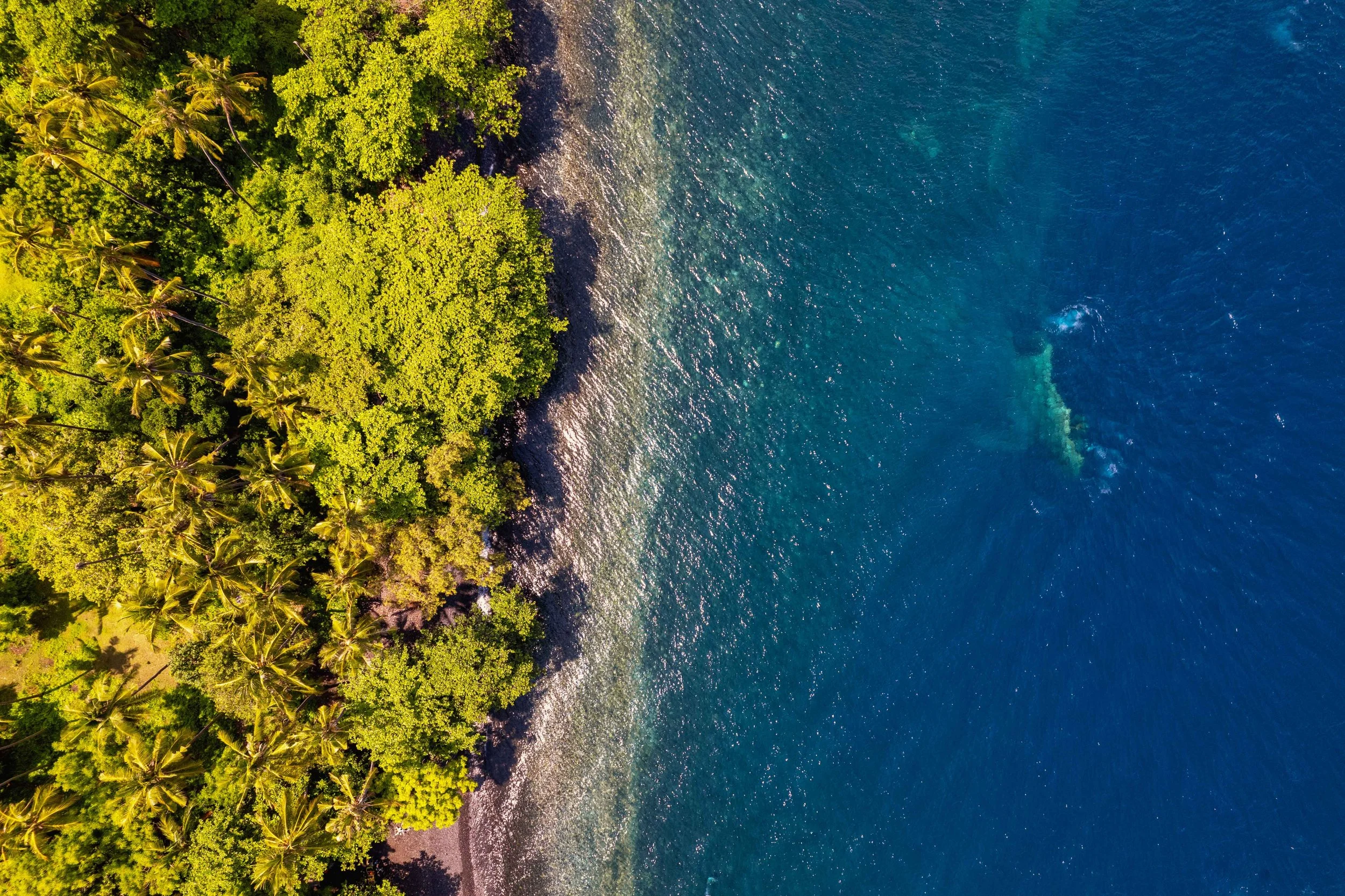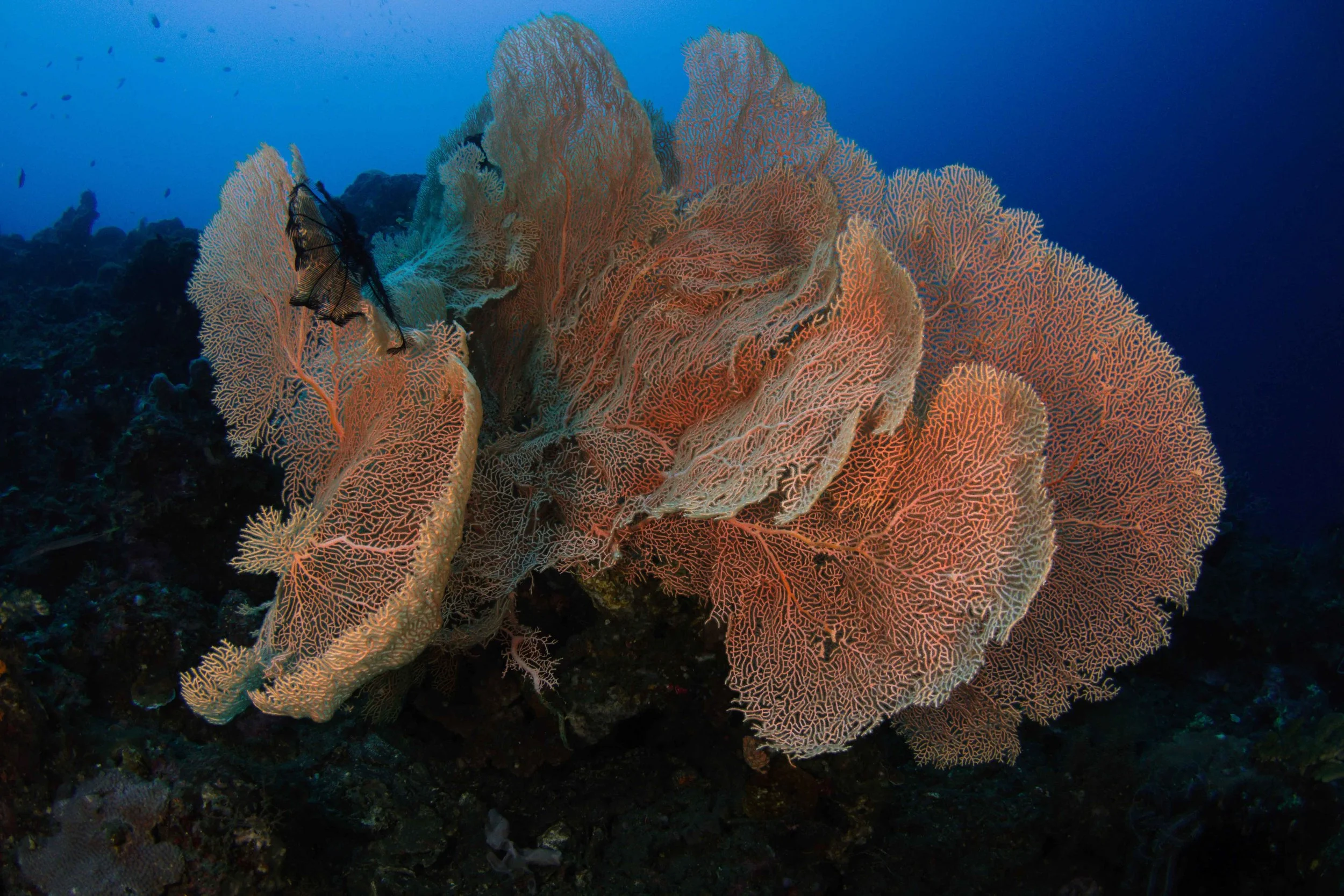My experience diving Tulamben and Amed in Bali
Tulamben and Amed are located on Bali's northeast coast and are popular diving spots. They offer different types of diving and a different feel for tourists as well.
I've visited and extensively dived in both places, and in this guide, I'll share my experiences, photos, and much more so you can get a full idea of what to expect at Tulamben and Amed.
Diving in Tulamben
Tulamben is a small fishing village on the northeast coast of Bali, famous for its diving. Most of the dive sites are shore dives there, meaning you simply have to walk in to access the dive site. With that in mind, Tulamben is a great place for both beginners and advanced divers on a budget.
Aerial shot of the Liberty wreck in Tulamben
Tulamben was the first dive stop during our two-month Balinese trip. My wife needed to get dive certified, so we decided to spend a few weeks in Tulamben and Amed.
I only spent a day diving in Tulamben many years ago while I was traveling through Southeast Asia, and I always wanted to come back to explore this area.
I knew that the dives were relatively easy, and with its calm waters and accessible dive sites, Tulamben is a perfect place for beginners. I signed up my wife with Lunar Dive Resort, and she had such a blast during her Open Water training she upgraded to Advanced Open Water right away. Most dive centers offer a discount when you combine these courses.
Taking our first dive selfie together
Lunar Dive Resort is a family-owned dive shop and resort. The owners (South African family) were super friendly and welcoming. They even invited us for Christmas dinner. My wife, Nori, had the privilege to do her dive training one-on-one - and I was really happy about this.
In most places, the trainer-student ratio tends to be 1 to 4, meaning the instructor has to divide attention. In this case, Nori had all the attention and the time to practice her skills, which we knew she would need in the near future since I have a chronic dive disease.
Cornel, her instructor, made her feel very comfortable and went above and beyond to make sure Nori had adequate knowledge while also having fun at the same time.
Every morning, after breakfast, we were picked up by the dive resort and taken to the previously discussed dive site, depending on the weather conditions.
The USS Liberty Wreck
Tulamben is among the most popular dive sites in Bali for one reason: The Liberty Wreck.
The wreck features the sunken USS Liberty, a United States Army cargo ship torpedoed by a Japanese submarine in 1942 during World War II.
Resting on a volcanic slope, the wreck is now covered in vibrant coral and teeming with marine life. Its close proximity to the shore and clear waters provide an accessible and captivating underwater experience for divers of all levels.
Diving through the Liberty wreck in Tulamben is a thrilling experience
The wreck is known worldwide and regarded as one of the world's greatest shore entry wreck dives.
While the wreck is the main attraction, Tulamben has plenty of other dive sites to discover, including drop-off, coral garden and seraya secret.
When is the best time to dive in Tulamben?
The best time of year to dive in Tulamben is from May to November (the dry season), as these months provide the calmest water conditions with good visibility.
Another thing worth mentioning is that Tulamben has rocky beaches, and can get windy, creating waves that makes the entry challenging or the dive site inaccessible. This usually happens during the wet season, but it can vary daily.
I did not mind the added challenge factor so my wife could get used to the fact that sea conditions won’t always be perfect for our future dives.
Photographing Tulamben
From a photography angle, Tulamben is mainly renowned for its macro opportunities; however, there is plenty to shoot with a wide-angle lens too. Barracudas, turtles, triggerfish, lion fish, colorful soft and hard corals were among the most common subjects to photograph.
Huge soft corals are beautiful photo subjects while diving in Tulamben
Resting turtle in Tulamben, Bali
Small coral ecosystem
Out of all the dives, my wife most enjoyed diving the Liberty Wreck at night. It offers a unique and entirely different experience compared to diving during the day.
I was also super excited about the night dive since I heard a lot about a group of resident bumphead parrotfish using the wreck as shelter for the night.
To my surprise, we did not see them. After the dive, I asked my local guide, he patted his stomach and told us that local spearfishers hunted a few of them down during the pandemic as they had nothing else to eat. The rest of the group were scared away, and they had never seen them around the wreck since. Sad story, but luckily, there were plenty of other marine life left to photograph around the wreck!
Triggerfish photographed while diving the Liberty wreck at night
Beautiful hard coral in Tulamben
Soft coral growing out of the wreck
Diving in Amed
After two weeks of (mostly) dive training, it was time for us to pack our bags, call our local taxi guy, and move over to Amed.
Amed is a slightly bigger fishing village about a 40-minute car ride from Tulamben. It's also on the northeast coast, and you drive south along the coast from Tulamben to reach it.
The coast of Amed with Mt. Agung in the background
Amed is more touristy and has a busier port, so more boats are going and coming into this area.
We found it better for snorkeling; Lipah Beach was one of the highlights of the trip - turtle and dolphin sightings are common here.
Another great spot for freediving/snorkeling is the Japanese wreck. This is the second most popular wreck in the area and is very small compared to the Liberty, but its shallowest part is only a few meters deep - making it perfect for snorkelers and free divers.
Given its easy accessibility, keep in mind that it’s always crowded with tourists.
Resting whitetip reef sharks
Green turtle at Lipah beach
Coral reef in Amed
When is the best time to dive in Amed?
The best time of year for diving in Amed is much the same as Tulamben; between May and November will provide the calmest conditions with good visibility.
As most of the diving is in shallow waters, visibility is not as big of a problem during the wet season from December to April.
Tulamben vs. Amed
Comparing the two from a diving point of view does not make much sense since Tulamben was far superior to me in terms of diving.
It offers more dive centers and resorts with direct beach access, as well as easily accessible dives that are packed full of interesting man made objects and ocean wildlife.
Tulamben coastline
Village of Amed from above
All in all, everything in Tulamben is about diving, with many dive resorts dominating the whole village, and there’s really nothing else to do here apart from diving, while Amed is bigger and more touristy with more restaurant options but better suited for snorkelers and travelers alike.
If you are looking for great diving on budget, Tulamben is the place to be. If you want more of the whole 'tourist experience', prefer snorkeling over diving, Amed is usually a better option.
That isn't to say that one is better than the other; it just depends on what you're looking for.
How to reach Tulamben and Amed
When you arrive at Ngurah Rai Airport, located in the south of Bali, you'll be looking at a 2 to 3-hour drive depending on whether you're heading to Tulamben or Amed (two for Amed, close to three for Tulamben).
I found that using a taxi to get there was easiest, but you can always opt to use a scooter and head up there yourself if you're traveling light.
Just be warned that the roads of Bali are not what you'd expect at home. Drivers are much more reckless and will overtake at any chance, motorbikes weave in between cars, and the road signs are unreliable.
In Summary
Tulamben and Amed are incredible places to visit in Bali if you’re a beginner diver or looking to get dive certified and want to explore Bali’s northeast coast.
While they offer different things, I encourage anybody to make the effort to visit both places if you're on that side of the island as they are quite near to each other, relatively speaking.
I also always recommend heading over to Nusa Penida and Lembongan if you have the time. You can reach these by boat from almost any port in Bali, and they offer amazing diving locations and centers.















